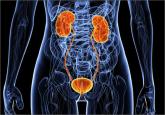News for Your Practice
ACOG issues guidelines for managing listeriosis during pregnancy
Treatment choices depend on the presence of fever for those exposed to food-born listeria
Deborah Reale, Managing Editor

With the first death from Ebola in the United States reported, it becomes even more imperative that ObGyns know about this deadly disease. Should an infected patient breastfeed her baby? Is an infected pregnant woman at increased risk for severe illness and death, spontaneous abortion, or hemorrhage?
As Ebola virus spreads from West Africa, it has become apparent that ObGyns in the United States may need to evaluate patients who have been exposed to the disease. The Centers for Disease Control and Prevention (CDC) has a dedicated Web site for Ebola that outlines signs and symptoms, transmission, risk of exposure, diagnosis and treatment options, and clinical guidance for health-care workers.1
What are the symptoms of Ebola?
If a woman from West Africa presents with a fever, the CDC advises that she be asked specifically about recent travel to affected areas (currently Liberia, Sierra Leone, Guinea, and Nigeria). Clinical signs and symptoms of Ebola include a fever of 38.6°C [101.5°F] or higher with additional symptoms1:
Symptoms may appear from 2–21 days after exposure to Ebola. If a person with early symptoms of Ebola has had contact with the blood or body fluids of a person sick with Ebola, objects contaminated with the blood or body fluids of a person sick with Ebola, or with Ebola-infected animals, the patient should be isolated and public health professionals immediately notified, says the CDC. Blood samples from the patient should be tested to confirm infection (visit the CDC’s Ebola Web site for a list of diagnostic tests).1
More women than men infected
In a recently published perspective from the CDC on what ObGyns should be aware of regarding Ebola, Jamieson and colleagues reported that, according to UNICEF data, in this current outbreak more women than men are infected.2 They say this is most likely because women in West Africa are the primary caregivers for sick relatives, as well as make up the majority of health-care providers and birth attendants.
Pregnancy and Ebola
Based on limited, historic data from other Ebola outbreaks in Africa, there is no evidence suggesting that pregnant women are more susceptible to Ebola, although say Jamieson and colleagues, there is limited evidence suggesting that pregnant women are more at risk for severe illness and death from Ebola.2 It also appears that pregnant women with Ebola are at increased risk for spontaneous abortion and pregnancy-related hemorrhage. In 1996 in Kikwit, Democratic Republic of the Congo, pregnant women were more likely than the overall patient population with Ebola to have hemorrhagic complications, specifically vaginal and uterine bleeding associated with abortion or delivery. Children born to mothers with Ebola have not survived, though the cause of death has not been identified specifically.2
Breastfeeding and Ebola
The CDC has issued recommendations for breastfeeding or infant feeding by women with suspected or confirmed exposure to Ebola. Two key points are made3:
CDC recommends that decisions about how to best feed an infant whose mother has probable or confirmed Ebola be made on a case-by-case basis, balancing nutritional needs with the risk of contracting the disease. There is not enough evidence to suggest when it is safe to resume breastfeeding after a mother’s recovery, unless her breast milk can be shown to be Ebola-free.3
Protecting health-care personnel
The CDC Ebola Web site1 provides specific protocols designed to keep health-care workers safe. These include detailed guidelines for evaluating returned travelers, instructions for specimen collection, transport, testing, submission, use of protective equipment, and isolation procedures.
Share your thoughts on this news! Send your Letter to the Editor to rbarbieri@frontlinemedcom.com. Please include your name, and the city and state in which you practice
Treatment choices depend on the presence of fever for those exposed to food-born listeria

Treating acute cystitis effectively the first time, and more clinical guidance on preventing, identifying, and managing infection
Pregnant women are about 17 times as likely as nonpregnant women to contract invasive unencapsulated Haemophilus influenzae disease, and when they...
New data shed light on preventing cytomegalovirus infection and wound complications, and reveal a disturbing picture of Clostridium-related...
